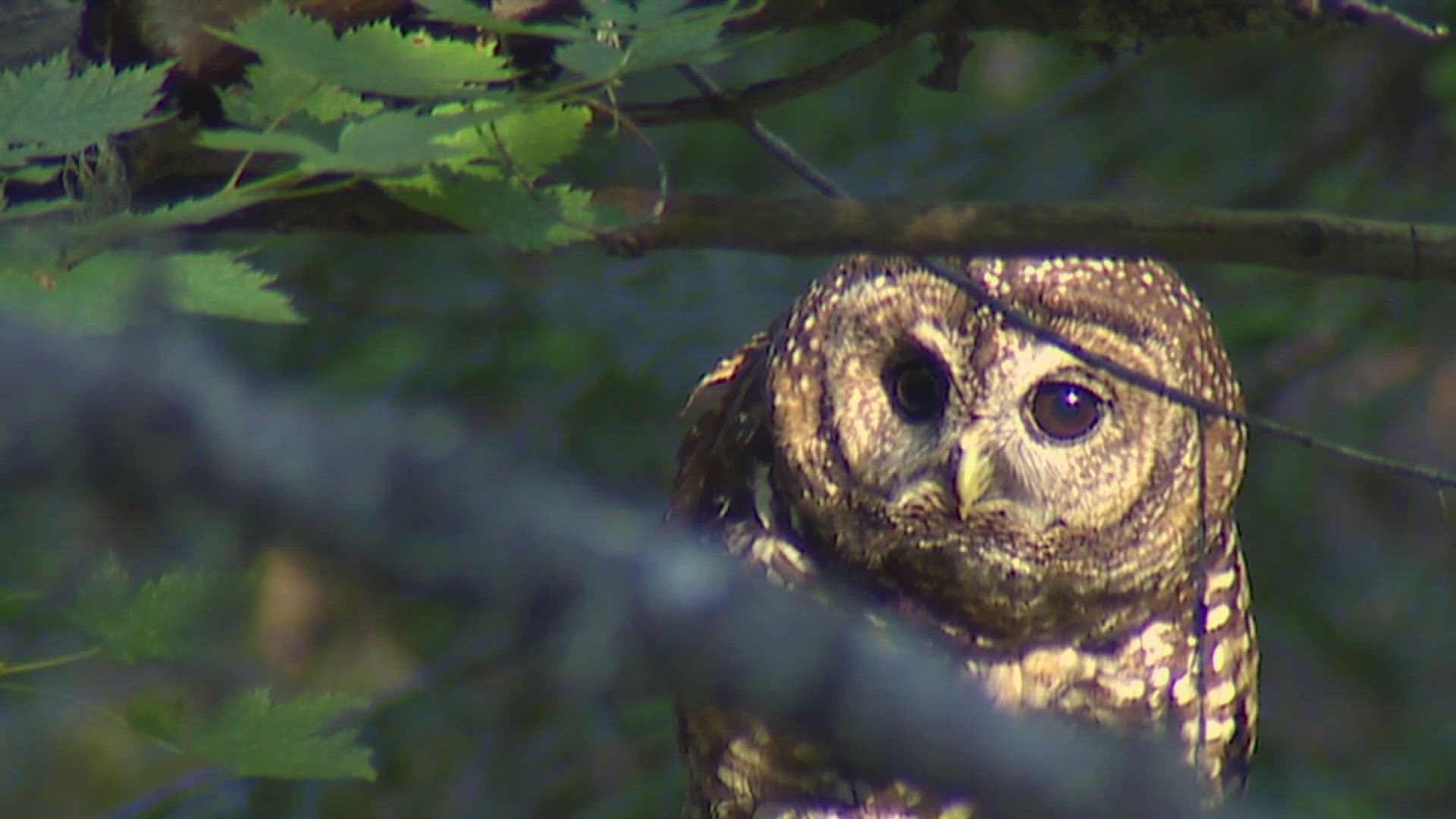SEATTLE — A U.S. Fish and Wildlife proposal to kill non-native owls to protect the endangered northern spotted owl has sparked controversy among conservation groups.
Decades of work have been done to try to protect northern spotted owls in the Northwest. After years of logging destroyed the old-growth forest they called home, conservationists worked to secure an endangered species designation, and new rules were put in place to protect habitat.
But the species is still on the decline, and U.S. Fish and Wildlife is proposing a broad suite of measures to address the issue.
Among those actions is managing the current population of barred owls, a species native to the East Coast of the United States that has migrated to the West Coast and grown significantly in recent decades. While northern spotted owls and barred owls look similar to the untrained eye, there are many differences between them; notably, barred owls are larger, eat a wider variety of prey and populate more quickly. U.S. Fish and Wildlife said they are more aggressive, taking ownership of northern spotted owl habitat and putting them at further risk.
"It is critical that we manage invasive barred owl populations to reduce their negative effect on spotted owls before northern spotted owls are extirpated from large portions of their native range," U.S. Fish and Wildlife wrote in a news release. "Therefore, action alternatives need to provide for rapid implementation and result in swift reduction in barred owl competition."
The agency would hire trained removal professionals to kill thousands of barred owls.
The proposal has attracted a broad range of debate. A coalition of environmental groups led by Animal Wellness Action and the Center for a Humane Economy issued a letter to the secretary of the interior asking to put aside what it called a "reckless plan."
"We think this is an overreaching, unworkable and inhumane plan," said Animal Wellness Action founder Wayne Pacelle. "This is something that's going to be very difficult to execute."
The letter disputed many of the points made in Fish and Wildlife's justification for the plan, ultimately arguing that it is "doomed to fail" and arguing in favor of nonlethal methods to protect the northern spotted owl.
"This is an issue in some ways of barred owls being scapegoating for what are underlying habitat protection challenges," Pacelle said. "Fish and Wildlife should scrap it and engage in nonlethal methods to protect spotted as well as barred owls."
Meanwhile, Birds Connect Seattle shared in a public comment letter that "while it is gut-wrenching to consider the scale of sustained violence proposed against individual [barred owls] in our forests, Birds Connect Seattle supports the US Fish & Wildlife Service’s preferred alternative for targeted removal of [barred owls] in priority areas." It cites the need to prevent extinction and the fact that even with removal on the West Coast, global populations of barred owls should remain stable.
"This is a species on the brink. There's not a lot of hope unless we act urgently and at a scale required to prevent extinction," BCS Urban Conservation Manager Joshua Morris said. "This is an issue reasonable people can disagree on and it's not something we took lightly or enjoyed having to weigh in on but we really do think that removing barred owls is what we have to do, urgently, if we want to protect the spotted owl population."
Both Pacelle and Morris noted that there is established competition between the species. Pacelle argued that it should be borne out in nature; Morris said it's not uncommon in conservation biology to have to make these decisions.
"Both owls are really cute, and the notion of killing a really cute animal to save another that almost looks the same is unthinkable for a lot of people," Morris said. "However, the species are not equivalent, though they do share habitat, and... this can have cascading impacts on our ancient forest ecosystems beyond just spotted owl populations."
BCS' support was conditional; the group also wants to see "continued and aggressive expansion of habitat protection" and questions addressed about the areas not considered for barred owl management and the impacts of rodenticides on owls and other species.
To read U.S. Fish and Wildlife's full plan and the current status of the barred owl management strategy, click here.

